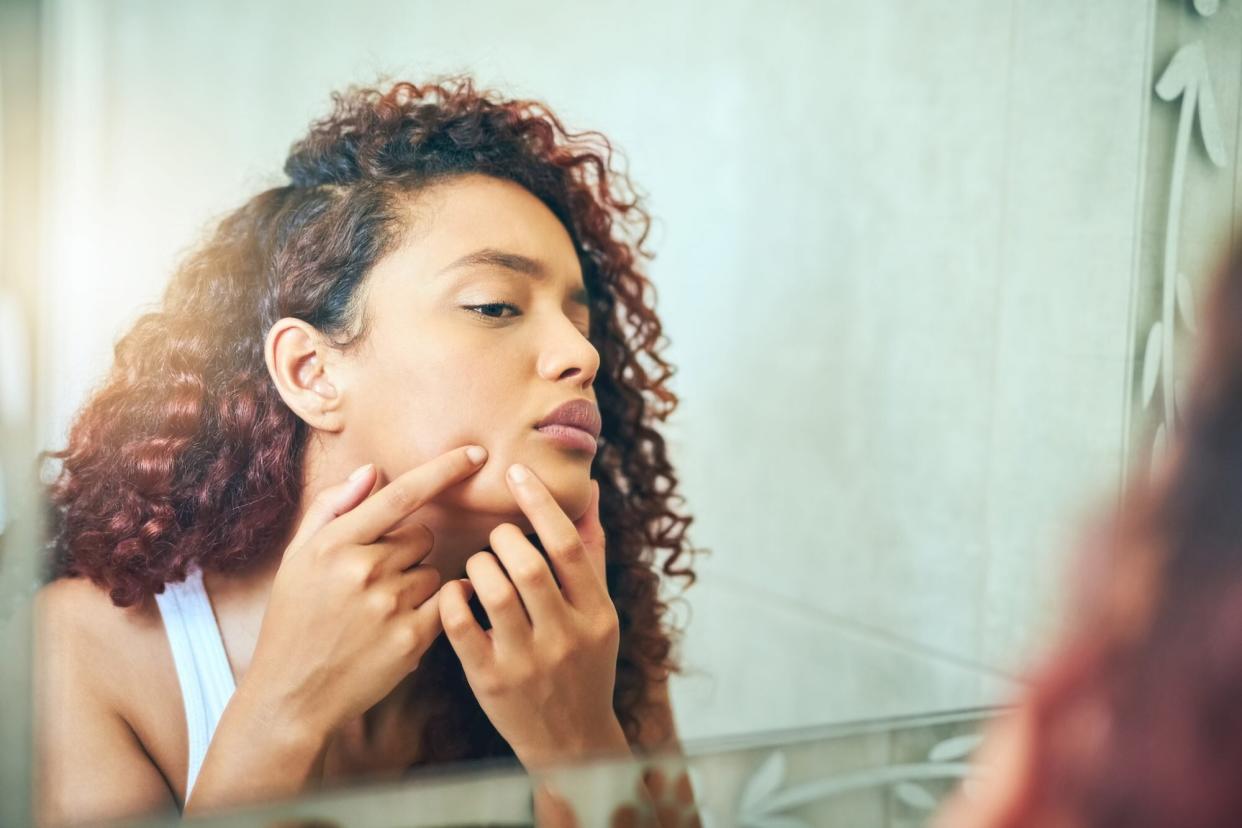How to Tell If You Have a Pimple Or a Boil — and How to Treat Each One

Getty Images Popping pimple
No matter how well you double-cleanse and balance all your skincare acids, breakouts can still occur. Sometimes, they slowly creep up on you, growing little by little as the days pass by. Other times, they pop up overnight.
Regardless of how quickly a spot appears, you likely begin the treatment process the moment you notice your skin flaring up. However, the way you tackle a whitehead is way different from how you would approach a blackhead — but sometimes, the bump you're endlessly applying hydrocolloid patches to isn't even a pimple.
Yes, we're talking about boils. They look like pimples, can even feel like pimples, but are certainly not pimples. (It's confusing, we know.)
RELATED: You're Not Imagining It: Everyone Has Acne Right Now
Here, two skincare experts break down the main differences between a pimple vs a boil and share how you can get rid of each of them quickly.
What Is a Pimple?
Anyone who's had a breakout has likely had some form of pimple, which is a result of your skin kind of going into overdrive.
"Acne [or pimples] happen when your skin produces excess oil — or sebum — and skin cells within the lining of your hair follicles or pores produce a clog," says Sandra Lee, MD, founder of SLMD Skincare and star of TLC's Dr. Pimple Popper. "That's the first stage of acne, which forms what we call comedones. When the clogged pore is open to the air, it oxidizes, and becomes a blackhead. When it's contained within the skin, it's a whitehead."
What Is a Boil?
Although boils may look like some forms of acne, they're way different. "A boil is a skin infection within the hair follicle or sebaceous gland," explains Dr. Lee. "It starts out as a tender red lump, and it can turn white as it fills with pus."
"It's an under-the-skin large bump. Sort of like a pimple, but much bigger and more painful," furthers," explains Jordyn Oakland, a ZitSticka skin consultant and NCEA-certified esthetician. As such, it's easy to confuse boils with either cysts or nodules at first glance.
According to Dr. Lee, the main difference between boils and pimples is that a boil isn't caused by acne bacteria — it's often caused by a microbe called Staphylococcus aureus, commonly known as a staph infection. "This means it's contagious, and can spread not just within the infected person, but to other people if they come into contact with the boil contents," she says.
VIDEO: Here's How to Tell If Your Skin Is *Actually* Purging
How to Treat a Pimple:
Thankfully, there are many acne-fighting ingredients that can reduce pimples and make them disappear.
Salicylic acid: Dr. Lee says that whiteheads and blackheads can usually be treated with this alpha-hydroxy acid. "Something like my SLMD Salicylic Acid Cleanser works well, and you can spot treat those [areas] with the Salicylic Acid Spot Treatment," she suggests. For budding pimples and ones that are deep in the skin, ZitSticka's KILLA microdarts are effective in delivery the SA directly to the area of infection.
Retinoids: This is another star ingredient that Dr. Lee spotlights. She says you can try an over-the-counter retinol, adapalene, or prescription tretinoin. "I recommend people start with the milder options and then work their way up," she says. The mildest option would be adapalene, then retinol, and then tretinoin. For a beginner-friendly adapalene, we suggest the Differin Adapalene Gel. Then, a gentle yet effective retinol is SLMD's Retinol Serum.
Benzoyl peroxide: Oakland says this beta-hydroxy acid is useful in combatting deep-set hormonal breakouts as it has anti-inflammatory benefits. For this, PanOxyl's AM Oil Control Moisturizer is great, as it also packs on SPF 30 to further protect the skin barrier and prevent post-inflammatory hyperpigmentation.
Of course, there are more severe types of acne that require oral antibiotics and more intense treatment, such as Accutane. "There is some controversy with this medication, but the most important thing to know is that it's a fantastic medication and it can do something that no other acne medication can do but it just needs to be closely monitored," says Dr. Lee. "Also, these are almost solely prescribed by dermatologists."
RELATED: How to Treat Stubborn Cystic Acne
How to Treat a Boil:
According to Dr. Lee, boils usually aren't serious and should clear up in seven to 10 days. Additionally, she says you can apply a warm compress which may help bring it to a head. "If it drains, clear away the pus and apply some antibiotic ointment and a bandage until it's healed," she says. Whatever you do, just don't try to squeeze or pop it to prevent the spread of infection.
If the condition of the boil worsens, becomes large, is hot to the touch, and is very red and/or inflamed, or if you develop a fever, take action. Oakland adds that antibiotics or professional drainage may be needed.
"In the treatment room, we will spot treat the area with a chemical peel and send clients home with FACE MAP hydrocolloid patches to help draw out the bacteria — depending on the severity."

